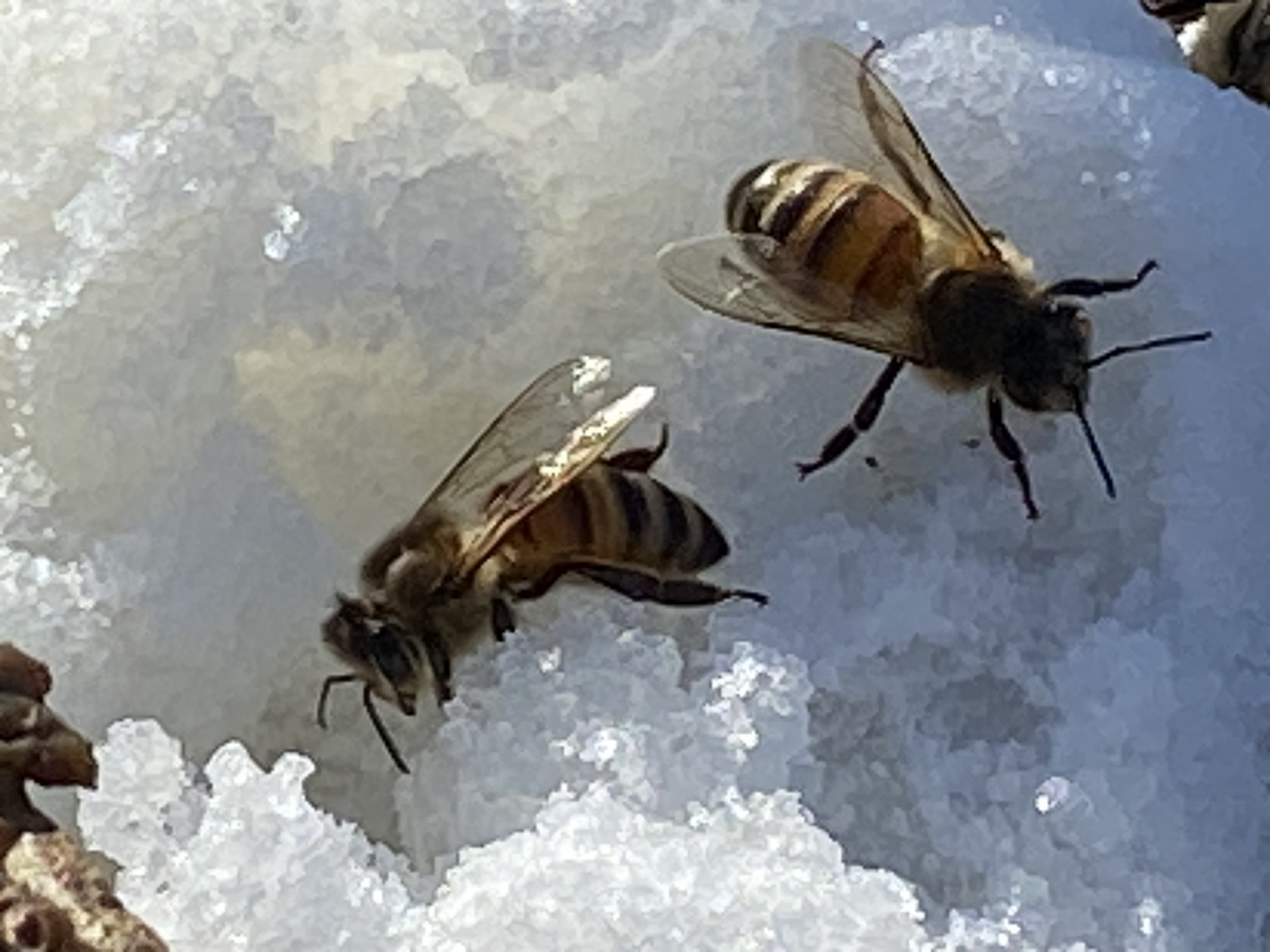Bottom Hive Debris
/This is the debris I found at the bottom of one of my honeybee hives this spring.
Bottom Hive Debris
So what do you think, debris from a dead or still live honeybee colony?
During one of our few sunny and warm days yet this spring 2018, I opened one of my hives for their first spring checkup and this is what I found on the screened bottom board.
Good news, the bees were flying in and out of the top feeding shim but no bees were using the bottom front entrance through the entrance reducer.
When I removed the bottom board, it struck me how as beekeepers we become amateur sleuths, looking at clues to determine what may have happened inside a hive. This 10-frame bottom deep was originally a brood box or nursery so take a closer look at what was on the bottom screen, what do you see?
A closer look at the hive debris shows undeveloped white drone bodies.
I also see little pieces of the sugar cakes I made and installed early winter to give the colony an extra food source in case they ran out of honey. Those can be re-used.
The undeveloped white drone bodies suggest the worker bees may have been removing the drones, a desirable hygienic behavior. The question is why, did the drones have varroa mites inside their cells? That is where varroa like to hide to reproduce while the drone larvae is developing.
What else do you see in this bottom of the hive debris, this is the debris on the right.
This is when a magnifying glass, or even a field microscope, would come in handy. If this were a dead colony, I would also be looking at the frames to see what symptoms I could see on the wax. What I would look for are the signs that look like little specks of sugar in the cells which are varroa excrement.
Another key to look for if this were a dead colony is to look at the wings to see if any are deformed, another sign of varroa mite presence.
Luckily this colony is doing quite well, they had established themselves in the top boxes and left this bottom box empty, typical of later winter/early spring spacing in a hive. That's why some recommend "switching boxes" as long as you're not breaking up the brood when you do it.
With this colony, I was moving them into smaller 8-frame boxes so I carefully kept all of the frames in the same order and moved the brood into the new bottom box hoping spring would arrive any time.
Spring?? Any time would be great, we're ready!
Charlotte














